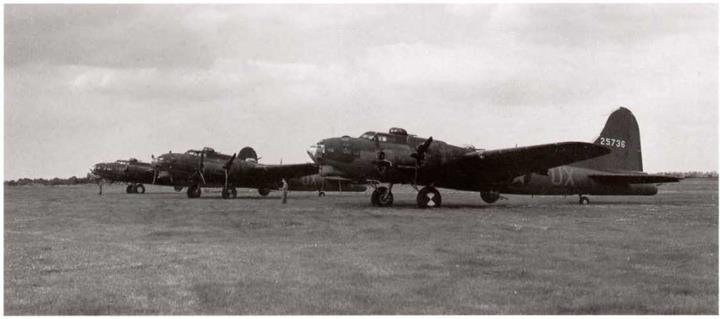Eglin Field issues report on test of Varied Camouflage of Fighter Aircraft, May 4,1943
Egiin Field issued another report in its continuing tests on camouflage, this one No. 3-43-47, dated May 4,1943. However, no copy of this report could be found at Eglin Field when requested by the author, so its contents remain unknown. However, no changes in the then current dark olive drab and neutral gray finish resulted, so it may be inferred that the results were basically negative.
AAF Bulletin No. 52, Aircraft Manufacturers’ Code Symbols, May 19,1943.
This Bulletin stated that the following manufacturers’ code symbols had been assigned to identify the aircraft manufacture and the plant in which the aircraft had been produced. These code symbols were to be added as a “suffix” to the present aircraft model designation, located on the aircraft as required in spec. 98-24105 (this list will be found in Appendix A).
Mat. Div. (Wash.) state that no definite recommendations for camouflage could be made throughout AAF due to conflicting theater needs, May 20,1943.
On May 20,1943, Mat. Div. (Wash.) forwarded to the Req. Div., OC&R (Wash.) the comments received in reply to the Dir. of Mil. Req. (Wash.) survey request dated March 24, 1943. Because of the conflicting replies received, Mat. Div, fell that no definite recommendations could be made to the AAF as a whole. The Mat. Com. (WF) project on smooth camouflage was substantially complete; results were showing that it could result in increases of from 2 to 4 miles per hour in speed with no loss of camouflage effectiveness.
Removal of Camouflage Requested by “Urgent Secret” teletype. May 21, 1943.
The following “Urgent Secret” teletype was sent on May 21,1943, by the Commander, Eighth Air Force Bomber Command, England, to the Bomb Wing One:
It is considered advisable to remove the camouflage from all of our operational aircraft in order to gain additional speed coupled with less weight. It will require 30 gallons of paint remover and 200 man-hours per B-17 to accomplish this work. As the AFSC (Air Force Systems Command) will not be able to do this work for us due to shortage of personnel it is believed it will have to be accomplished by station personnel. It is planned to have this camouflage removal start on aircraft out for maintenance and repair and battle damage and gradually work towards fully operational aircraft.
This will possibly cause some of your formations to consist of half camouflaged and half uncamoutlaged aircraft at first but eventually they will all become uncamouflaged. It is realized that this will require an additional amount of labor and time on the part of our own personnel. It is believed the advantages to be gained will greatly outweigh this factor. Request your concurrence or non-concurrence in the above. Forward your reply by 1500, May 21, 1943.
If you are in concurrence with the above, this HQ.’s will take the necessary steps to furnish your command required material and personnel to provide camouflage coverings for your aircraft while in dispersal areas. Aircraft will not be stripped of camouflage until authority is granted by this HQ.’s.
|
Three Boeing YB-40-VEs of the 91st BG at Bassingbourne, England, show the extra turrets installed under the nose and above the radio compartment of the converted B-17Fs. Seen on May 15,1945, these were intended to provide fighter protection for the bombers over Europe. The nearest one is 42-5736, the fifth one of twenty converted. (USAF) |
The reply received on May 21, 1943, from the Commander, Bomb Wing One, Eighth Air Force, England, stated:
Concur in plan to remove camouflage from operational aircraft. Request this headquarters be furnished thirty (30) gallons of paint remover immediately so that comparative test can be made between a camouflaged airplane and one with the paint removed. Not desirable to start paint removal until satisfactory camouflage coverings are provided. Tests now being conducted in this wing on camouflage coverings for airplanes and coverings for dispersal points.











